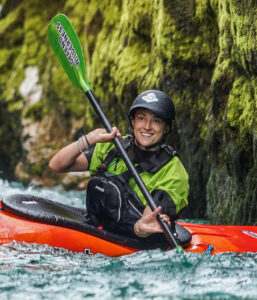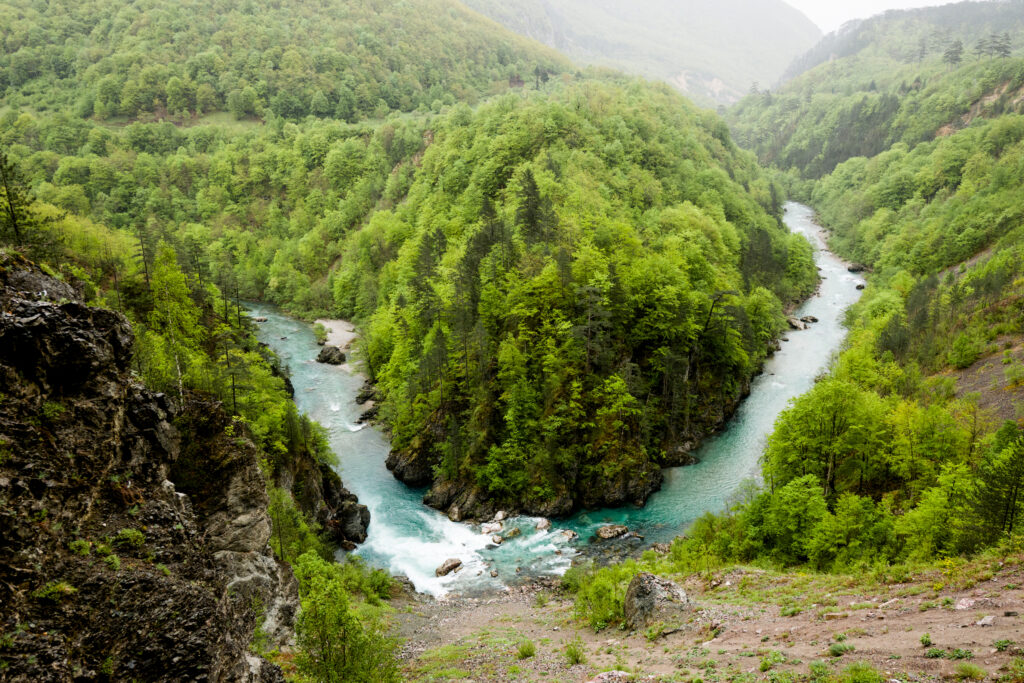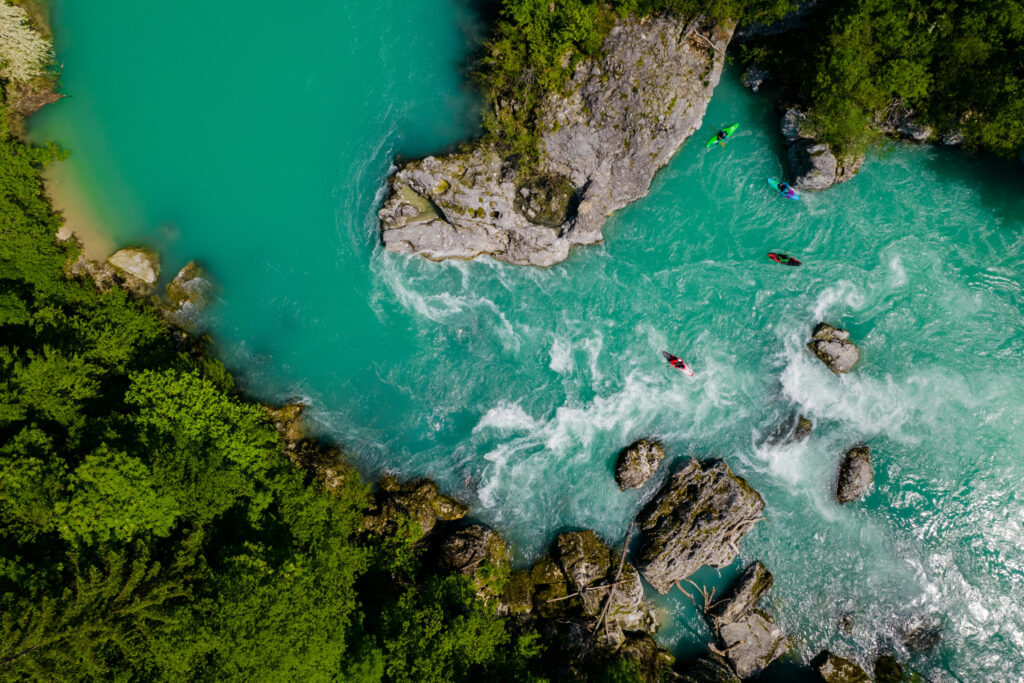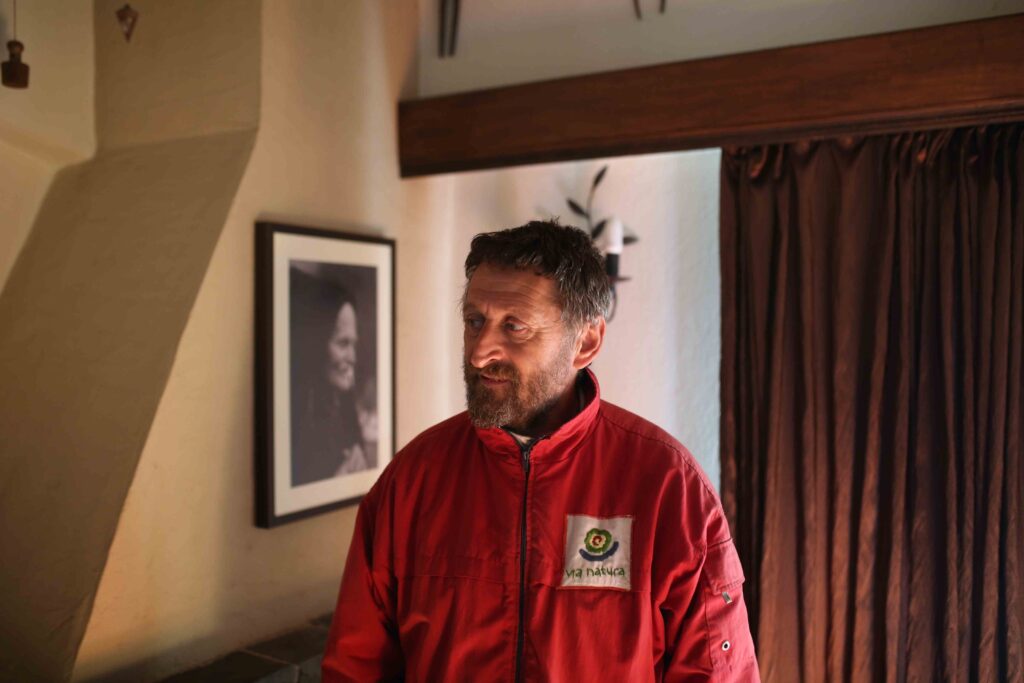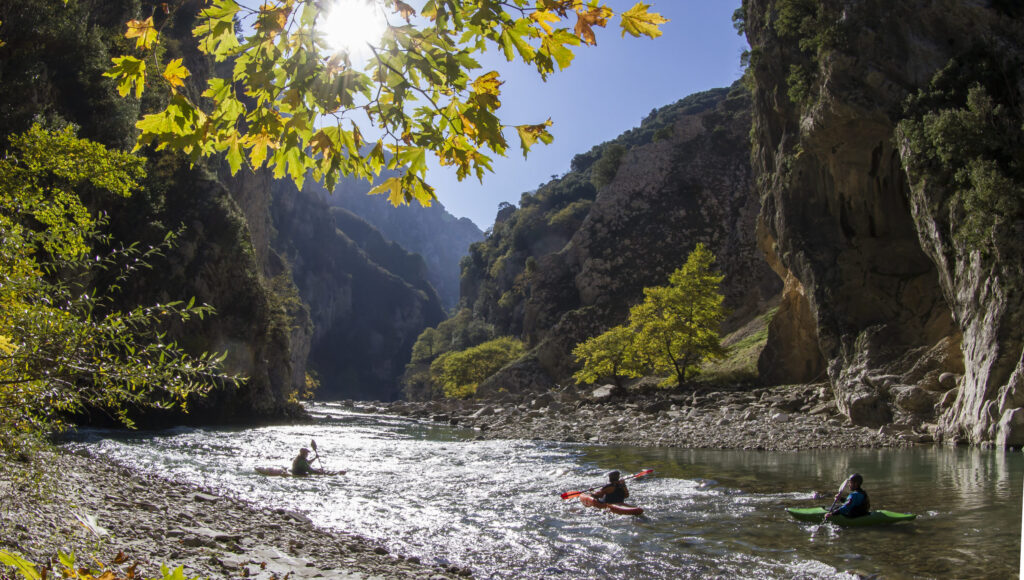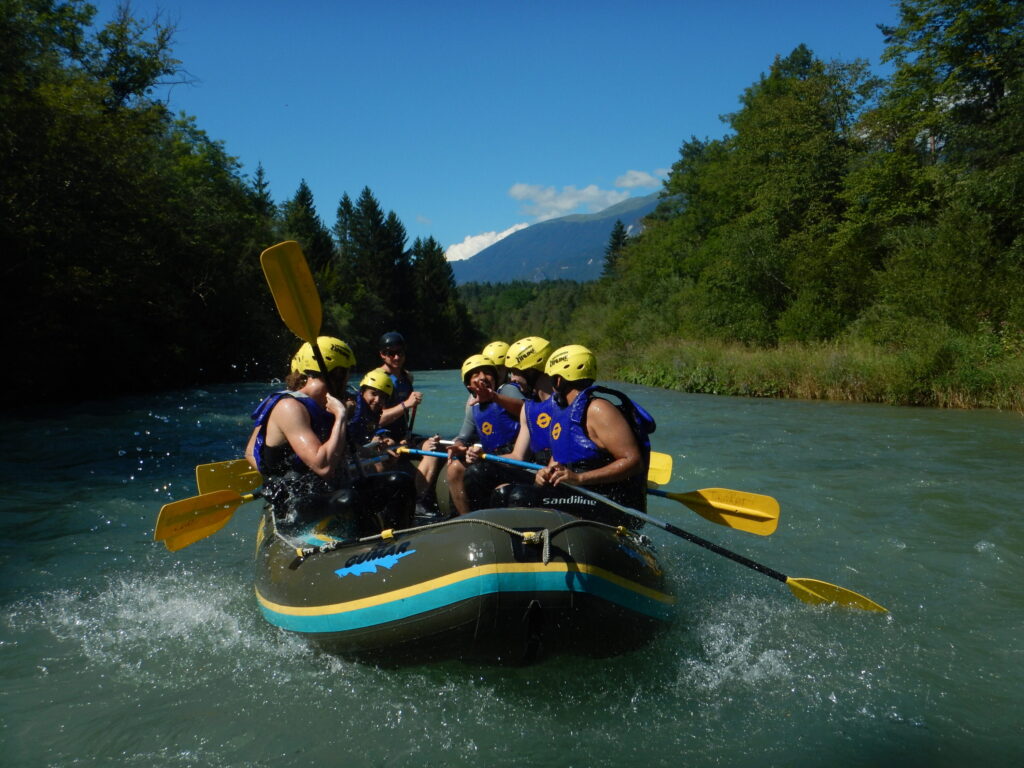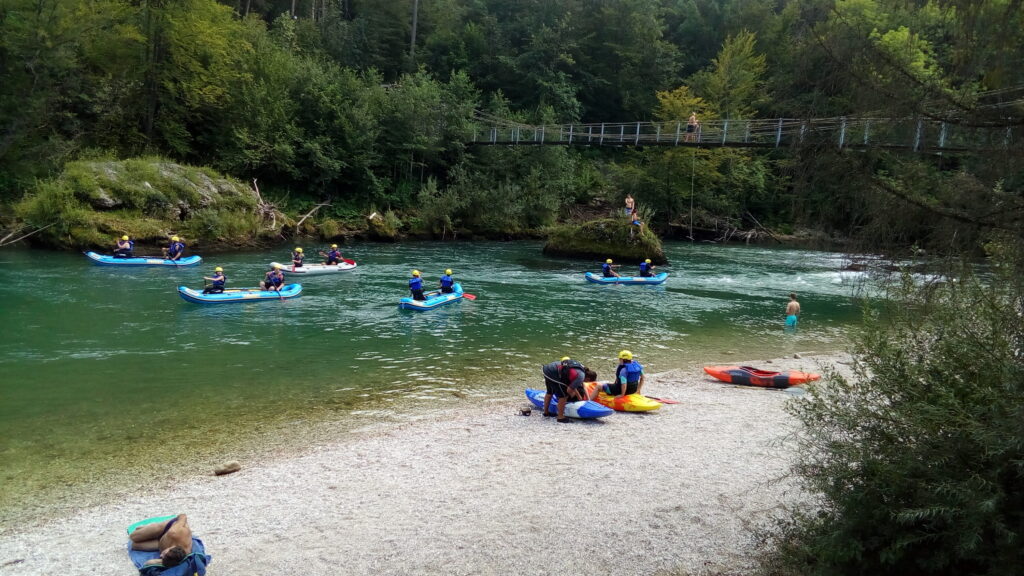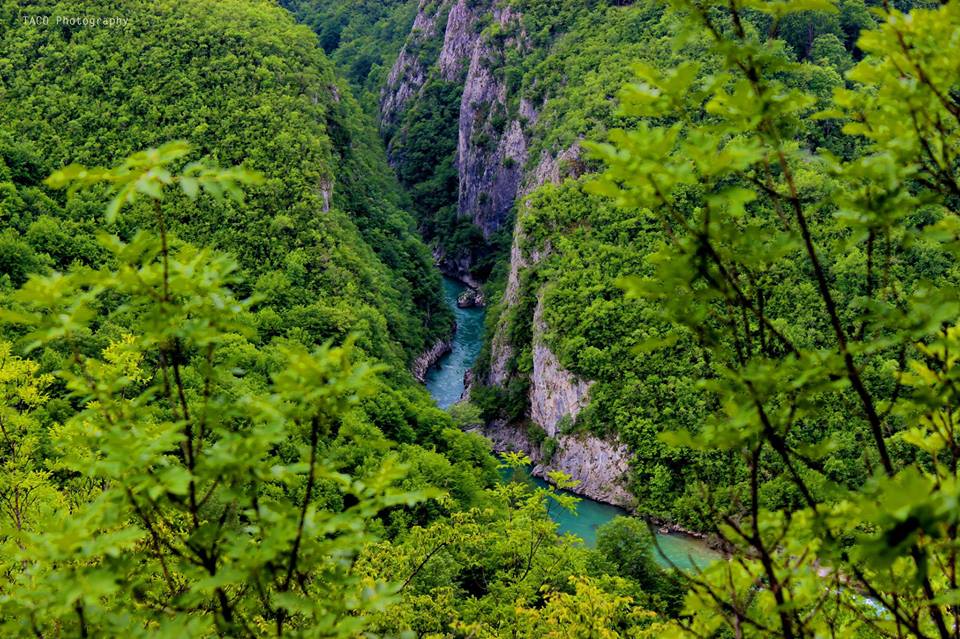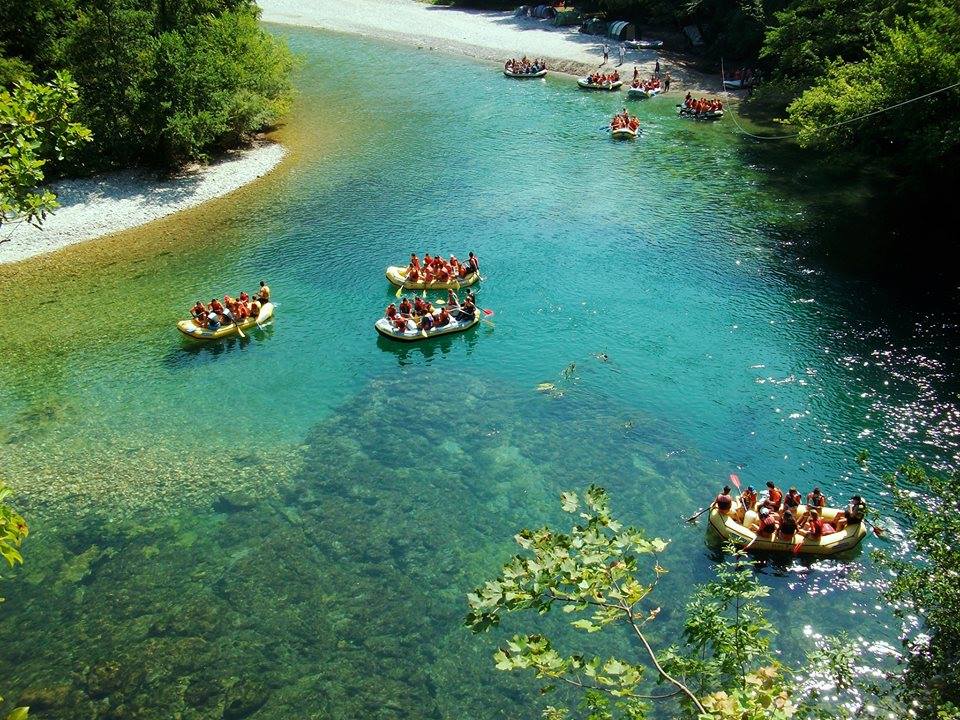(Interviews translated from Slovenian and Bosnian by Rok Rozman)
Rafts are the ultimate whitewater vessel for variety. From floating effortlessly down swifts, sitting high and dry above the class 3 waves, or charging hard on big volume rivers, rafts can take hits, run tight lines and even handle surf, all while carrying gear and paddlers of every age and ability. And so, rafting has become embedded in the adventure tourism industry around the world. From Indonesia to Russia, you can find rafting companies sharing local landscapes, ecology and culture with a splash of adrenaline.
But where did this idea of using modern, inflatable rafts to combine the adrenaline and sightseeing for recreation tourism, really come from? To find out, Carmen Kuntz dives into the communities of whitewater in southeastern Europe.
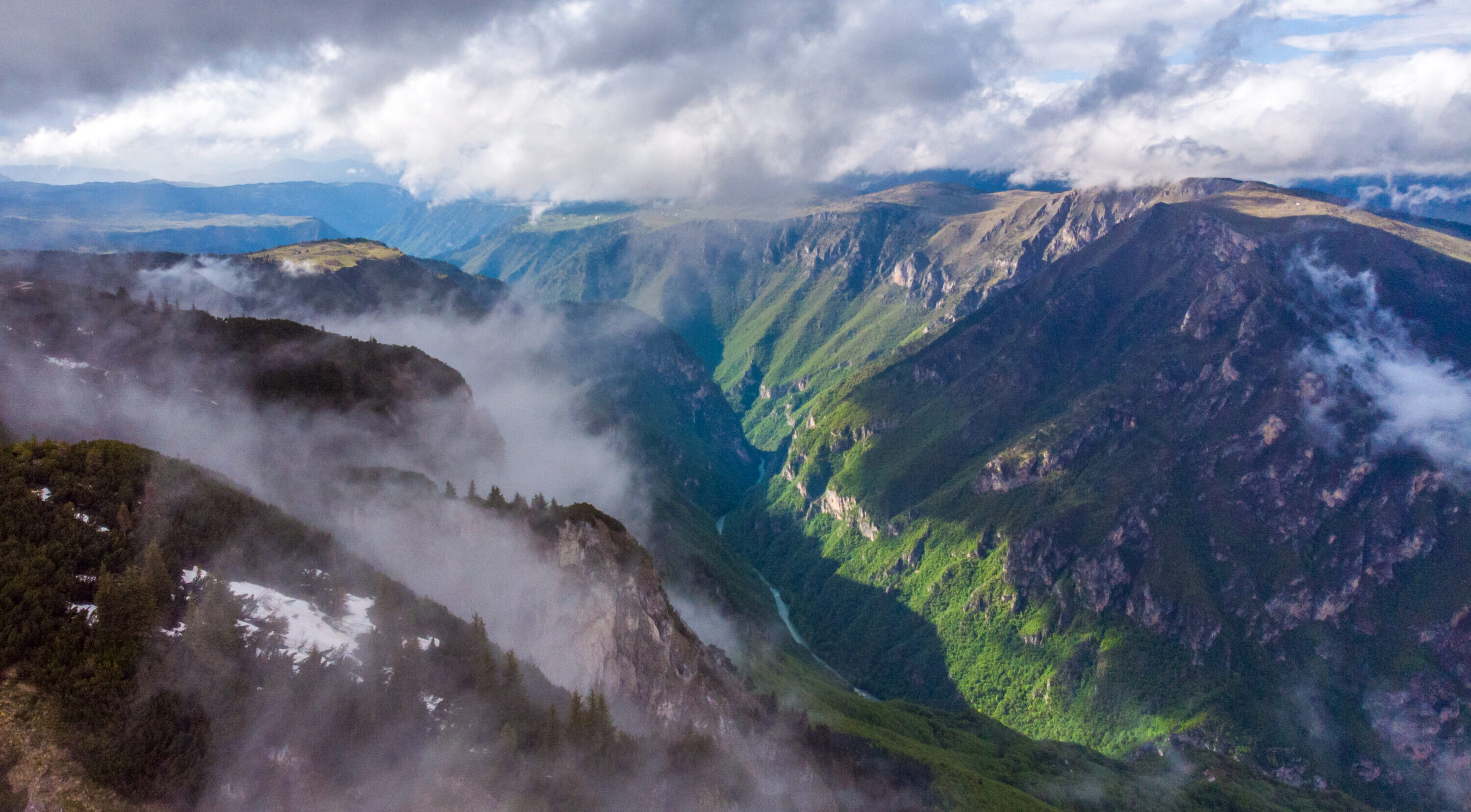
Rafts are one of the most primitive forms of aquatic transportation. Historically timber and reed rafts were used to move around people, products or even the logs themselves. In ancient Egypt or northern Scandinavia, for getting from point A to point B across water– including whitewater– rafts just makes sense. But when did rafting make it into the commercial adventure tourism space?
The true origins of commercial rafting in Europe is undecided but some theories claim that after the war, people used old liferafts from WWII ships for exploration and eventually for taking guests downriver. Commercial rafting as we know it, also has a somewhat disputable beginning with many countries starting their own operations around the same time. According to Danilo Barmaz, president of the Italian Rafting Federation, the French are widely credited with first using rafting as a commercial venture, with Italians following suit with client trips in the early 1980s.
In southeastern Europe – from Slovenia to Greece – commercial rafting also developed in the 80s with a handful of whitewater enthusiasts taking the leap to guide people down stretches of remote whitewater. Despite political unrest experienced in some areas in the early nineties, Nikos Manthos from Greece, Tine Pirnat of Slovenia and Hadžiosmanović Muhidin-Hitko from Bosnia and Herzegovina are some of the whitewater pioneers that paved the way for adventure tourism in the region, sharing their stunning rivers and natural history from the seat of a raft. History in these regions is saturated in crisis and change, but these three companies withstood turmoil to share a love of whitewater. From the ground up, these guides-turned-rafting pioneers created a whitewater culture that thrives today.
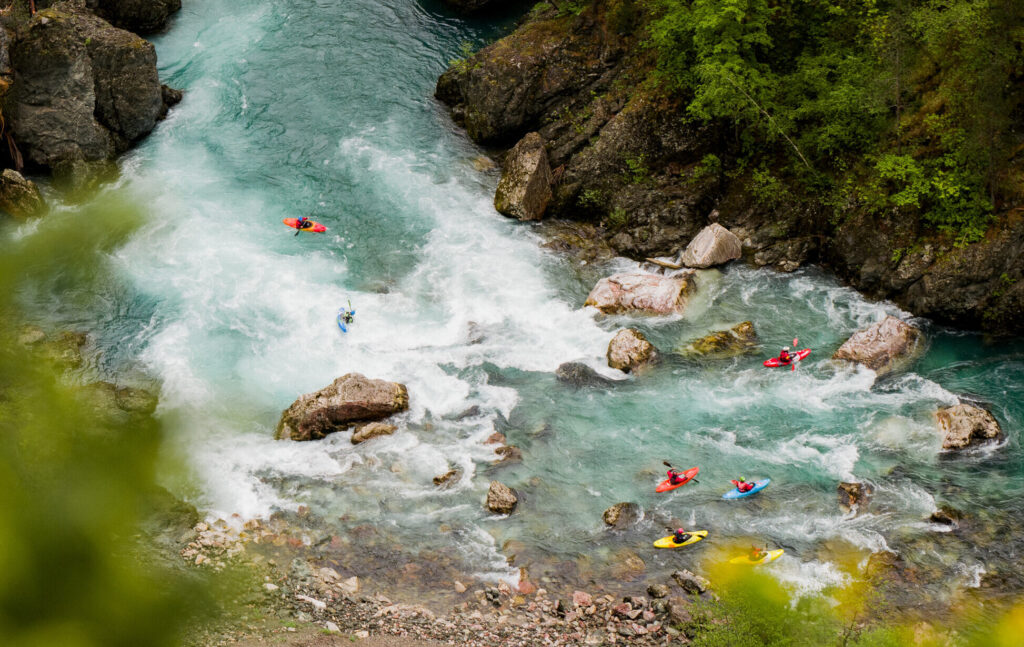
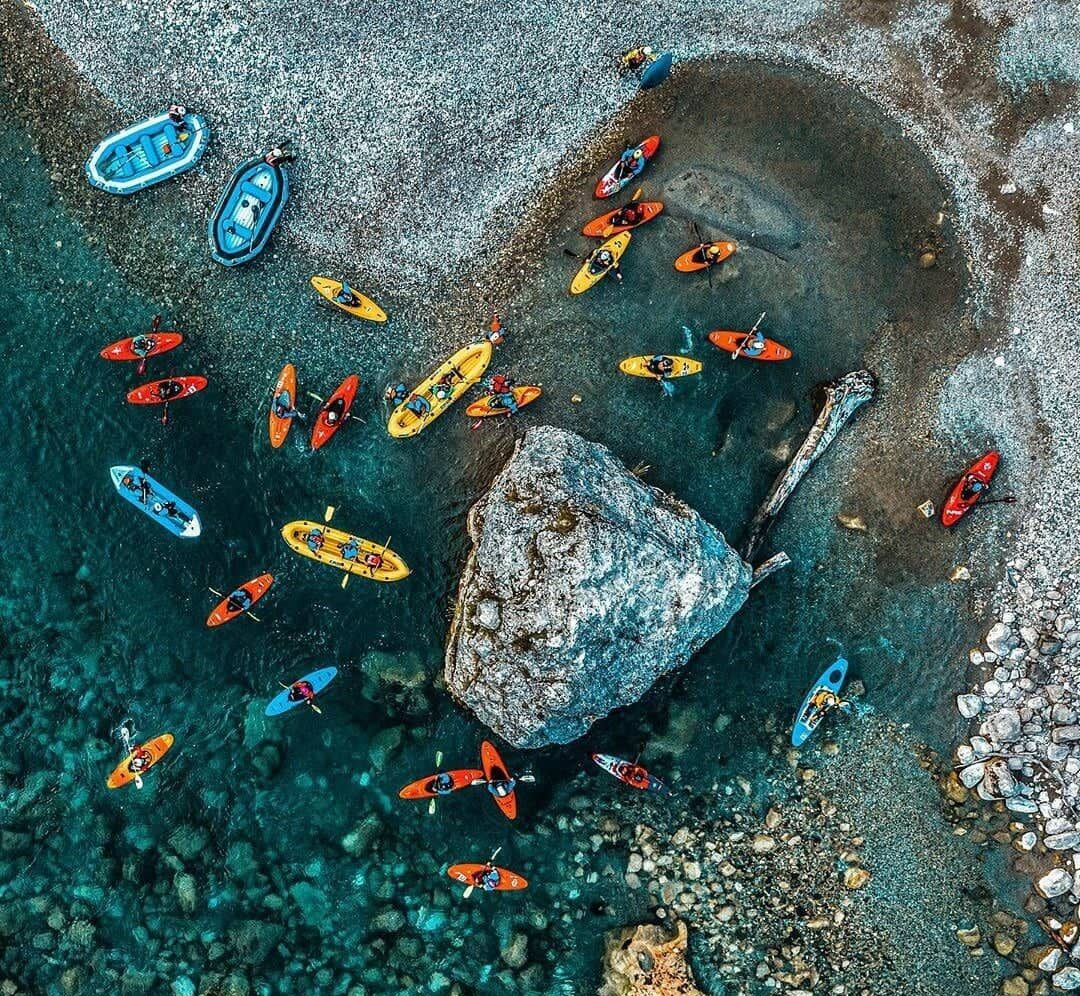
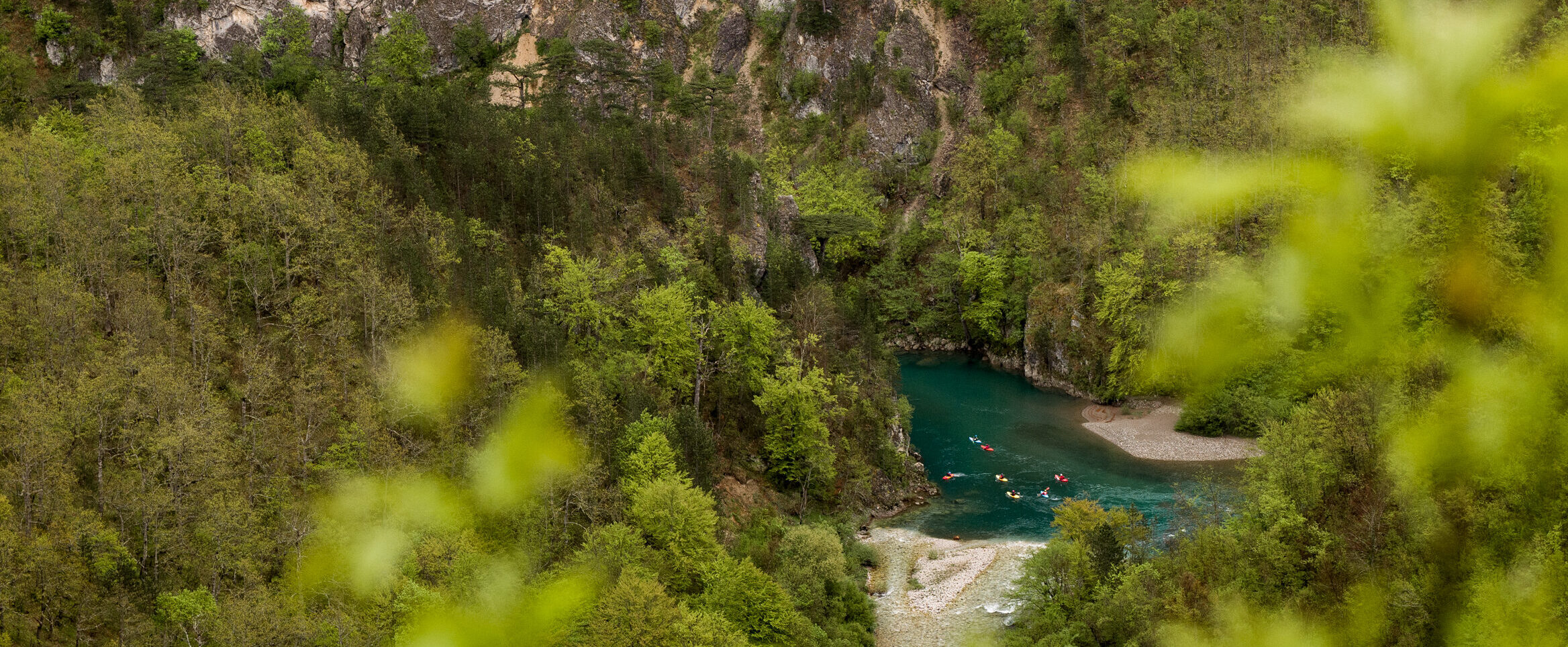
Via Natura
Founder/Owner/Guide: Nikos Manthos
Home river: Kalaritikos and Arachthos Rivers, Greece
Founded: 2001
Website: Via Natura
Rafting to connect people with wild places.
It’s no exaggeration to say that paddlers arrive at Via Natura campsite and rafting base in Ioánnina Greece as strangers, and leave as family. People come to northwestern Greece for the rivers, but they come back because of the genuine hospitality, the cultural experience and the whitewater community. With deep, rust-colored canyon walls peppered with neon green trees, and the rumbling whitewater below, this is an aquatic paradise and a place ancient Greeks believed to be the home of gods. When you get off the Arachthos River at Via Natura campsite and rafting base, founder and owner Nikos Manthas is waiting with his homemade tsipouro.
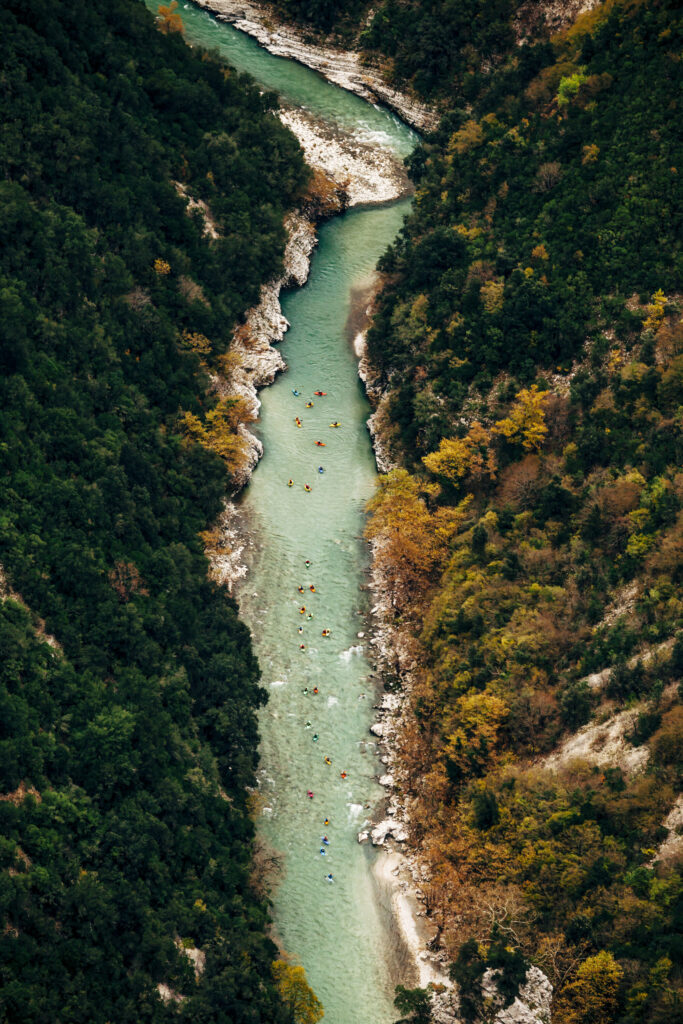
Happiness is a powerful currency in a place with shaky economics. When the economy struggles, so does the environment
From childhood, seeking adventure outdoors was deeply embedded in Nikos’ life. An avid skier, mountain biker, hiker and paraglider, he saw people coming from around Europe to paddle Greek rivers, and yearned to explore his country’s whitewater also. Seeking whitewater rafting and kayaking advice and guidance, Nikos and friends invited outside instruction in the form of Frenchman Vincent Lhote of Quey Rafts.
‘Vincent was not only a source of knowledge and morals but a source of inspiration,’ says Nikos. ‘As Alexander the Great said, Ι owe my father that I live but my teacher that I learned to live well.’
From his start as a raft guide in 1997, to March 2001 when he opened Via Natura rafting base and campground, whitewater has been a passion, not a job. Spring is prime rafting season in Greece with pleasant weather and high water levels, but quality paddling can be found year round, which keeps Nikos and wife Marina very busy. With grade II-IV whitewater the Arachthos is one of Greece’s most popular rivers with ancient stone bridges, caves, waterfalls, and natural springs.
Back and forth from their campground and nearby hotel, everything is made, repaired and prepared by hand; from the intricate staircase in the hotel, to the meals prepared there. For Nikos, the best part of owning a rafting company is the mornings; drinking coffee and making a plan for the day. He manages everything from accounts to campground maintenance. From shuttle driving to gear rentals. As well as guiding rafts. ‘In the morning you feel so optimistic. You are planning and dreaming. And in the evening you take count of how many things took flesh and bones…and you count joy and happiness. Rafting offers happiness.’
Happiness is a powerful currency in a place with shaky economics. When the economy struggles, so does the environment. As one of the first rafting companies in the region, Via Natura has been at the forefront of environmental battles, fighting hard and successfully preventing a third dam on the Arachthos River. ‘The economic growth rates in our region, hotels, restaurants, etc. is proportional to the growth of our customers in rafting,’ says Nikos. ‘So you can easily understand that sustainable development is not in the dams, but in what is dynamic and respects the environment.’ As a result of the victory, there are now five rafting companies on the river. Most companies use the same gear, rafts and vehicles so Via Natura relies on the human connection with clients to stand out.
Tourism in Greece has taken a hit in the past few years. But Nikos approach to rafting and the outdoor industry remains the same. ‘For us the most important thing is to connect people with the river and with the history of this area; our clients with the local people. And the tsipouro of course.’ With a huge client return ratio, the philosophy at Via Natura proves that respecting wild places pays dividends. ‘We give them the feeling that they are part of this area and they write a new chapter of recent history.’
Tina Raft
Founder/Owner/Guide: Tine Pirnat
Home River: Sava River, Slovenia
Founded: 1984
Website: TinaRaft Rafting Centre
A family business that supports the paddling community
Running a rafting company isn’t easy. As a business that depends on tourism, marketing and ultimately seasonal weather, there is no rest during summer months. From driving trailers to hanging wetsuits, in order for daily operations to run smoothly, all hands must be on deck. On the banks of the Sava River in northern Slovenia, that is exactly the case at TinaRaft Rafting Center. With family involvement on all levels the Pirnat family rests only when the clients have gone home. Around a circular garden table with a massive umbrella overhead, they sip coffee, beer, tea or schnopps watching the grandkids tearing around with the family dog and rafting base cats.
TinaRaft is centered around family and community. The base started out as a kayaking club, or a ‘boating society’ as Tina Raft founder Tine Pirnat (known by paddlers as ‘Tina’) calls it. In a small country with ample whitewater and accessible rivers, this was the second club of its sort in Slovenia and the first on the Sava River. Tina led the club and started taking people down the river and the paddling club morphed into a rafting company, with its first year of operation in 1986.
‘I liked the things that the club embodied and I wanted to stay in the world of rivers so owning a business was the way,’ says Tina.
A raft was Tina’s second choice of a water vessel. A compromise of sorts. ‘My wish as a teenager was to be a sailor on a big ship,’ he says. But this would have required him to join the army and complete more education. ‘I’ve always been intrigued by whitewater and now I’m a little sailor on a small ship.’
Today, neatly stacked rafts with the TinaRaft logo on each rest on the grass around the rafting base. But in the beginning, rafts for recreation were hard to find in Yugoslavia. In the early 80s, Tina drove down to the Croatia liferaft company Dumi and asked them to cut a liferaft in half and glue in some extra rubber so he could fit more people on the boat. The was the first real commercial raft in Slovenia and required guides to hand bail the boat which had a solid floor. Tina would make paddling tops himself and bought PFDs from a local company.
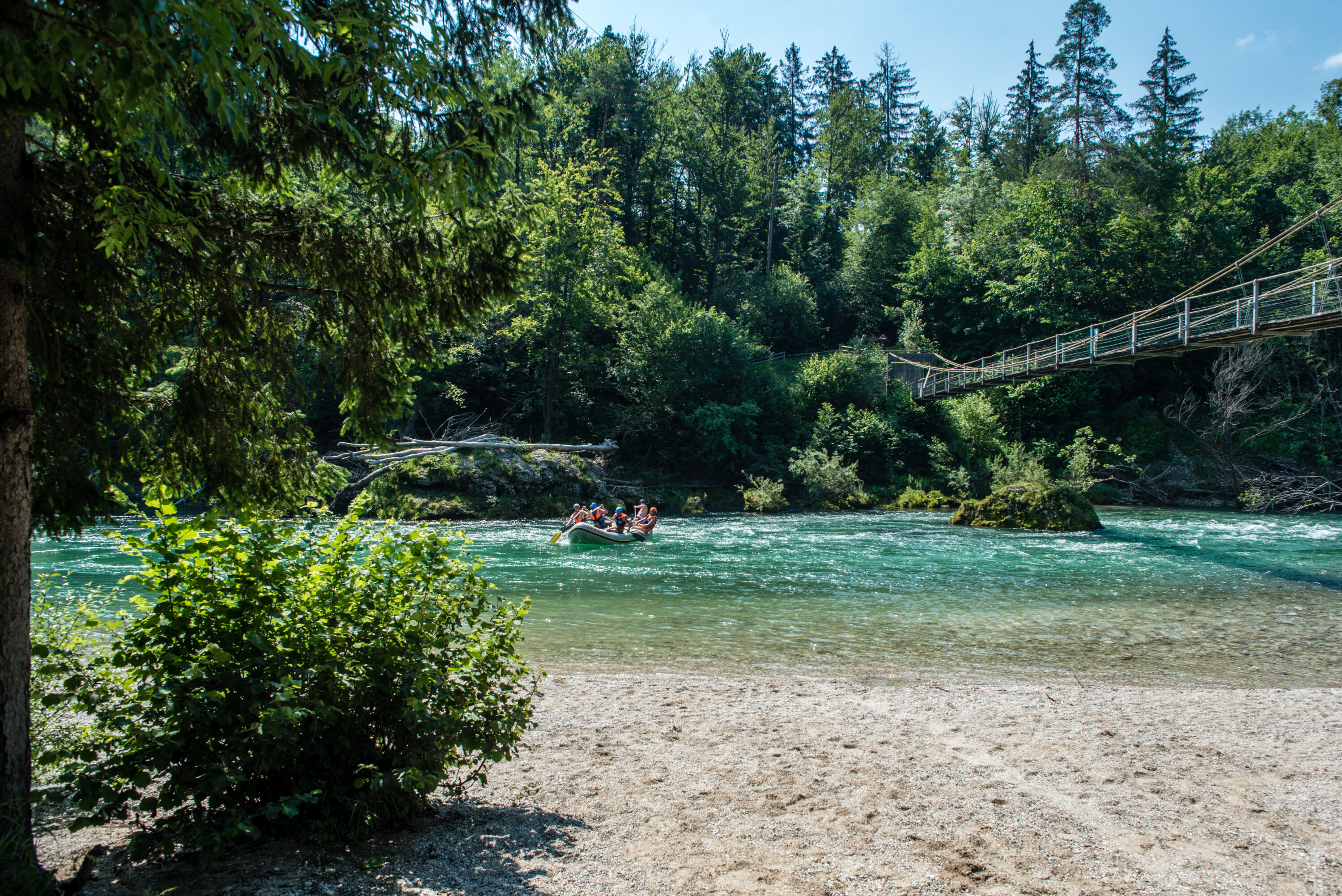
I’ve always been intrigued by whitewater and now I’m a little sailor on a small ship.
From the start, TinaRaft was about creating a whitewater community. He helped young men get rafting guiding certifications, often funding the training and even created a small but prosperous local raft team. ‘Guys from local villages who had never been in raft or in whitewater got really into rafting.’ They participated in Euro Cup races and traveled to compete, all funded by the TinaRaft.
On the edge of the clear, blue-green water of the Sava River, TinaRaft is just 10 km from the tourist hub of Bled Lake where they have an office. With the peak season from June to August, they cater trips to clients’ needs and will start rafting in May and go until October. ‘Rafting on the Sava is not so difficult, so anyone can do it,’ says Tina. ‘It’s also a super cool thing for team building and some local businesses come for that too.’ With the rafting season so short, the Pirnat family developed more services like mini rafting, bellyaking, ziplining, and paintballing.
Tourism in Slovenia has flourished in recent years, and the reputation TinaRaft has built (as well as summers with good weather), have helped the business progress. Tina Raft was one of the first companies to travel out of country for rafting trips and still does two-three trips per season on the Tara River in Montenegro, bringing clients down in vans and offering the full experience of multi-day rafting. But licensing, regulations and registration of boats makes competing with companies in other, less developed countries a bit challenging. ‘I’m happy rafting is developing in other areas of the Balkans,’ he says, ‘but it’s so easy for them because there are less rules and regulations. It’s just part of the game though, and it’s okay.’
What started as a club evolved into a successful family business as one of the first commercial outdoor adventure tourism bases in Slovenia. ‘It’s really important to us to be a part of the community’, he says. ‘It’s not just about the business. We host local kayak races and a mini festival called Water Forever.’ TinaRaft also supports the Balkan Rivers Tour and was one of the first stops during the inaugural tour in 2016.
Tina’s favourite part of the business remains the same as the day he started the paddling club – simply taking people down the river. He often does trips with his son, which is a point of pride and happiness for Tina. ‘I’m a bit old now, so I just pick a young crew,’ he says laughing. TinaRaft is saturated in family history and steeped in whitewater. With two generations of whitewater guides on the water, you are in good hands.
Hitko Rafting
Founder/Owner/Guide: Muhidin Hadžiosmanović
Home River: Neretva River, Bosnia and Herzegovina
Founded: 1999
Website: Hitko Rafting
Encouraging tourism and rebirth for post-war Bosnia and Herzegovina.
Mention of Bosnia and Herzegovina can bring to mind images from the vicious war that took place there just decades ago. Unfortunately, mention of the luscious forests, clear rivers, welcoming locals and rich culture get overridden by the unrest the region has become known for. Civil war tore at this country after the fall of Yugoslavia but the exotic, natural beauty remains, and eco-based, adventure-fueled tourism thrives here today.
Muhidin Hadžiosmanović, known by most as Hitko, founded Hitko Rafting in 1999, just five years after the war in his country ended. He has introduced his family, friends and many locals of the area to rafting, much like his father introduced him to whitewater-he simply put them in a boat. ‘My very first whitewater experience was in the 60s when my father put me in a kayak for the first time. I was 5 years old,’ says Hitko. Adventure and adrenaline followed when his father purchased an inflatable, 6-person military raft in 1970, which Hitko and friends would put in the whitewater of the Neretva River.
Hitko Rafting was born out of practical necessity. And a love for whitewater. ‘After the war, our little river house and raft was destroyed and I needed some kind of work. Taking into account that there was lots of foreigners present in Bosnia (EUFOR, humanitarian organisations and others) who needed relaxing activities, parties and adrenaline, I came to the idea to use my love towards the river as a job.’
The Neretva is a source of life for the region, nourishing the ecosystems and people, many of which still live traditionally and close to the land. With its source over 3000 feet above sea level the Neretva drains into the Adriatic Sea and is one of the largest rivers in the eastern-Adriatic basin. Tucked in the forest about two hours drive southwest of the capital city Sarajevo, Hitko Rafting was the first agency of its kind on the Neretva River and one of the first in Bosnia. Now there are 30-35 companies working on the river.
The rafting season on the Neretva starts in April and lasts until mid October. Easy whitewater and spectacular landscape, the 12 mile rafting section winds through three deep canyons.
‘That stretch is just perfect,’ says Hitko. ‘It offers pristine nature in a remote location with safe rapids; a perfect combination of adrenaline and safety suitable for kids, adults and elders.’
With small dams and hydropower a rampant problem in the Balkans, the Neretva is an example of a wild river that provides sustainable tourism opportunities. ‘For the last 20 years my family and I have been living solely off the income that this river provides,’ says Hitko. ‘This alone is amazing.’
By expanding the rafting base into a resort, Hitko Rafting offers more than just a three hour raft ride. The ethno village boasts five houses for rent, a kayaking school (one of only a handful in the country) additional activities like canyoning, motocross, kayaking and hiking and a restaurant serving local, homemade food like honeycomb veal, river trout and sweet pies. All enjoyed with beautiful natural surroundings. Many of Hitko rafting clients are Bosnians who live out of country but come back for holidays, but the tourism demographic is changing. ‘Slowly, Bosnia is becoming interesting to foreign tourists as well, with Neretva rafting being one of the top attraction in the adrenaline and outdoor tourism sector.’ Rafting continues to have a positive effect on the region and this one actively alone has brought many positive changes to the nearby town of Konjic, which has evolved from an industrial village to a tourist town.
‘Our goal is to have every single guest feeling like she or he is at home, like they have a home and friends here in Bosnia,’ he says. ‘To come back and enjoy the river with us again…that is the best commercial and best compliment.’ After spending 45 years on the whitewater of the Neretva, Hitko’s relaxed attitude and deeply honest hospitality is the foundation that his company stands on. His rafting philosophy is simple: Rafting is the most popular kind of active rest.
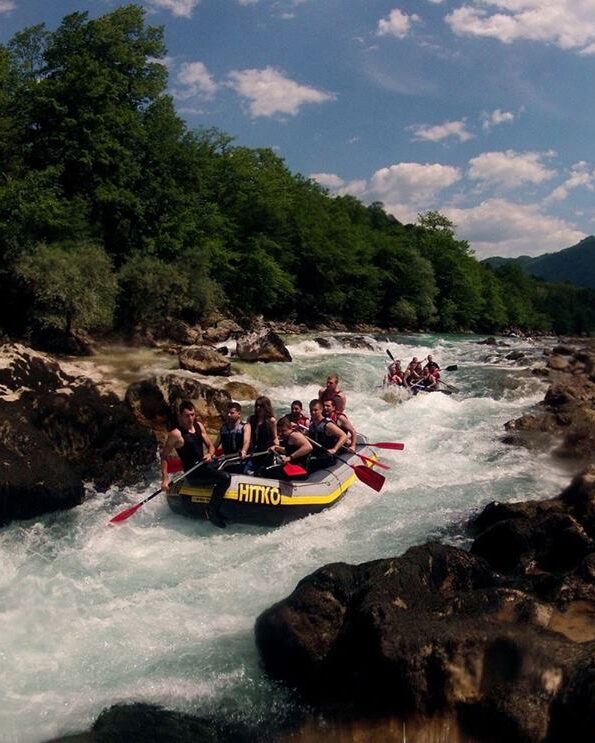
Slowly, Bosnia is becoming interesting to foreign tourists as well
Rafting pioneers. Historical badasses. Or just good, honest, whitewater-obsessed river people. These men and their families are living examples that opening hearts and homes and sharing a river can keep them free flowing, build unbreakable family and community bonds and create a tourism hotspot out of a post-war country.
One paddle stroke at a time Nikos, Tina and Hitko have paved the way for others but also created a way of life for themselves. All over sixty, they each spend a few days on the river each year. For these pioneers of eco-tourism in Southeastern Europe, rafting is about adventure, happiness and getting off the beaten path.
On each river, in each country and even on each day, the experience will be different. But one thing that is constant. The experience will be genuine.
Don’t miss a single adventure
Sign up to our free newsletter and get a weekly BASE hit to your inbox
Other posts by this author
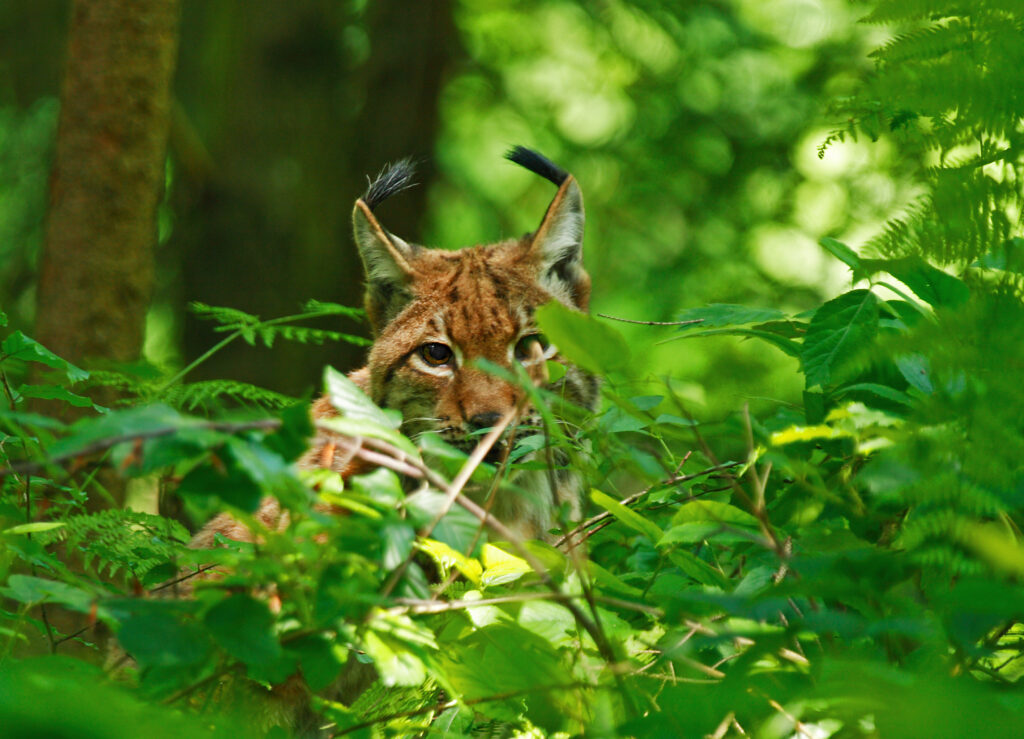
Story • Carmen Kuntz • Mar 24, 2023
The Missing Lynx: The Return Of Slovenia’s Big Cat
Hunters are the reason that lynx roam the forests of Slovenia again
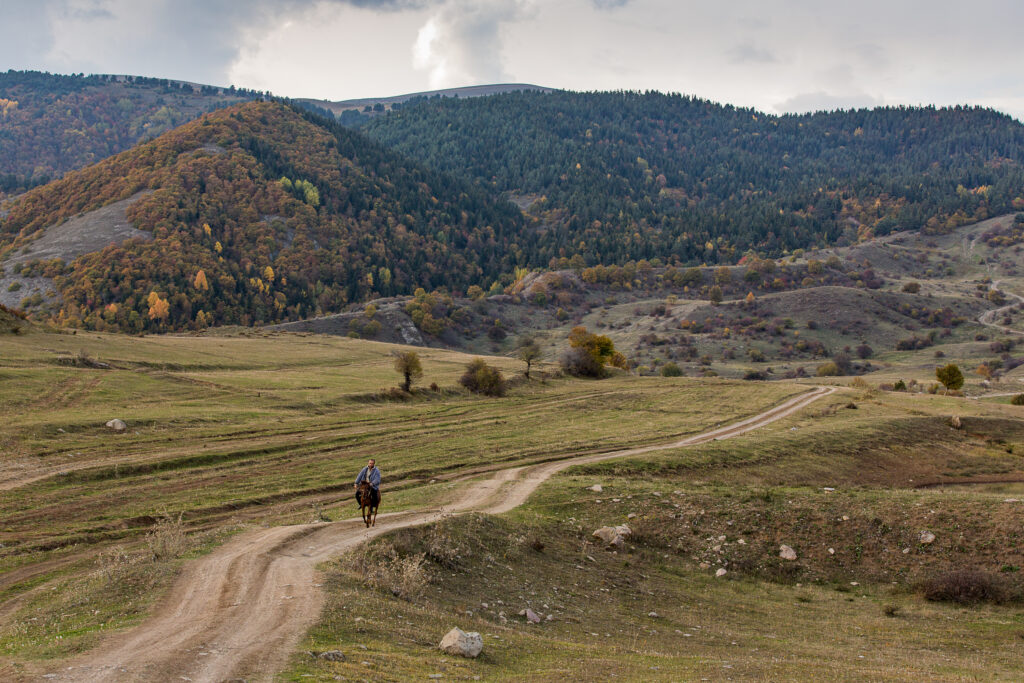
Story • Carmen Kuntz • Mar 06, 2023
How Innovative Nature Conservation Is Making a Big Difference in Armenia
The people behind the ECF project - protecting wildlife and supporting local communities in the South Caucasus
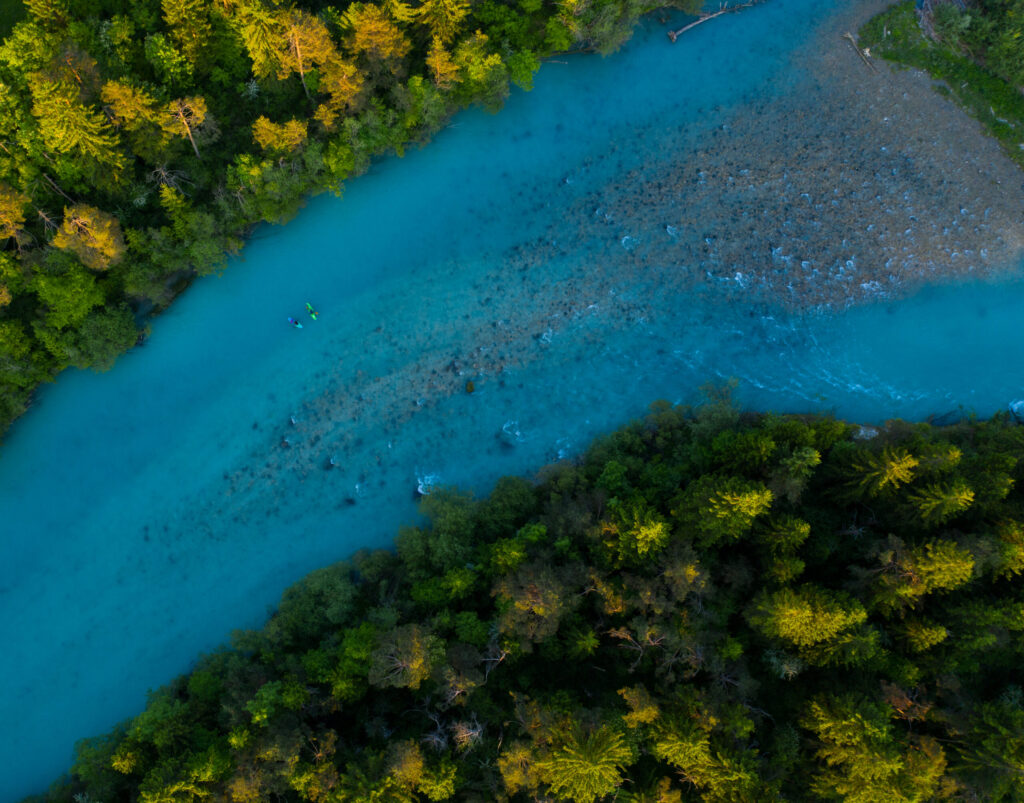
Story • Carmen Kuntz • Feb 18, 2022
One With The River
Whitewater kayaking and environmental action on Slovenia's Sava River
